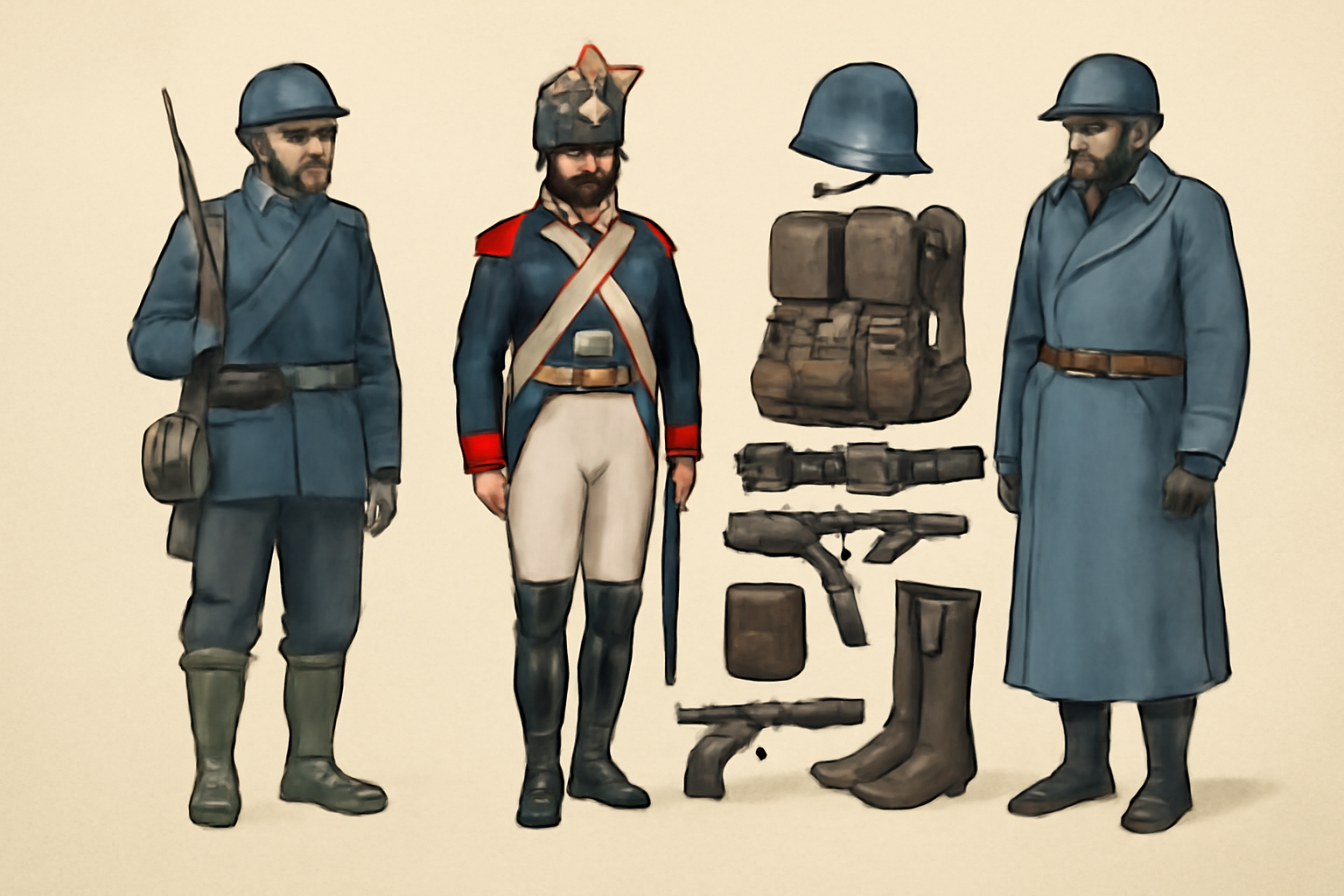
WW2 French Army Gear Breakdown: Uniforms, Greatcoats & Napoleonic Legacy
Published on Jun 02, 2025
WW2 French Army Equipment: A Comprehensive Guide to Uniforms and Gear
World War II marked a critical chapter in military history, and the French Army's equipment during this period reflects a unique blend of tradition, innovation, and adaptation. For enthusiasts of military history and collectors alike, understanding the intricacies of WW2 French army uniforms and gear offers a fascinating glimpse into the past. This guide explores everything from the French greatcoat to Napoleonic Polish uniforms, placing them in a historical context while highlighting their significance during WWII.
The Significance of WW2 French Army Uniforms
During WWII, the French Army's uniforms not only served practical purposes but also symbolized national pride and military heritage. After the shock of the German invasion in 1940, French soldiers' gear had to adapt quickly to the demands of modern warfare. However, many elements retained a strong connection to France's military past.
When we talk about WW2 French army uniforms, we must understand their roots in earlier French military apparel — including styles used during the French and Indian War and the Napoleonic era. These historical uniforms laid the groundwork for the design and function of later military clothing.
Historical Context: French Uniforms from the French and Indian War to Napoleonic Polish Uniforms
The French and Indian War (1754-1763) featured early French military uniforms that were heavily influenced by 18th-century European military fashion. These uniforms typically included brightly colored coats with distinctive facings that identified regiments, complemented by tricorn hats and breeches.
The Napoleonic Wars, however, introduced a significant evolution in French military dress. The Napoleonic Polish uniforms used by Polish soldiers allied with France are particularly notable. These uniforms were characterized by their elegant designs, featuring distinctive elements such as the czapka (a square-topped hat), colorful tunics, and sashes. The influence of Napoleonic military fashion carried forward, impacting uniform designs well into the 20th century.
The Iconic French Greatcoat: A Symbol of Resilience
One of the most recognizable pieces of French military apparel during WWII was the French greatcoat. This heavy wool coat was designed for harsh weather conditions and was an essential part of the infantryman's uniform. The greatcoat's design was practical, providing warmth and protection against the elements while allowing mobility.
Typically dyed in a distinctive blue or grey, the greatcoat often featured a double-breasted front, wide lapels, and large buttons stamped with military insignia. It became a symbol of the French soldier's endurance during the dark days of WWII, especially in the harsh winters on the Western Front.
WW2 French Army Equipment: Beyond Uniforms
While uniforms are the most visible aspect of military gear, the equipment soldiers carried was just as vital. French soldiers were equipped with a variety of tools and weapons designed to complement their uniforms:
- Headgear: The iconic Adrian helmet, introduced in WWI, was widely used during WWII by the French forces. It featured a distinctive crest and provided basic protection while allowing soldiers to wear it comfortably with gas masks and other gear.
- Boots and Footwear: French army boots were sturdy leather designs made for durability in diverse terrains.
- Weapons: Standard-issue weapons included the MAS-36 rifle, pistols, and grenades, all carried in functional leather or canvas pouches attached to the uniform belts.
French WWII Uniform Styles: A Closer Look
There were several uniform styles worn by French forces during WWII, reflecting different branches and roles:
- Infantry Uniforms: Typically consisted of wool tunics, trousers, and a great coat for cold weather. Colors ranged from blue to grey, providing some camouflage while maintaining tradition.
- Cavalry and Motorized Units: These often had variations in cut and materials to accommodate mobility and the demands of mechanized warfare.
- Resistance Fighters and Free French Forces: Post-1940, many Free French fighters and Resistance members adapted their uniforms out of necessity, mixing civilian clothing with military gear for camouflage and stealth.
Collecting and Appreciating WW2 French Army Equipment Today
For collectors and historians, authentic WW2 French army uniforms and equipment represent a valuable window into the past. Items like the French greatcoat or Napoleonic Polish uniforms are highly sought after, both for their historical significance and their craftsmanship.
When collecting, it's important to verify authenticity by examining materials, stitching, insignia, and provenance. The French greatcoat, for example, should be made of heavy wool with original military buttons and markings.
Conclusion: Why WW2 French Army Equipment Matters
The story of WW2 French army equipment is more than just about fabric and metal; it's about resilience, heritage, and identity. From the distinguished French greatcoat to the colorful Napoleonic Polish uniforms, these garments tell stories of bravery and tradition. For history enthusiasts, collectors, or anyone fascinated by military apparel, understanding these pieces helps keep history alive — and provides a connection to the soldiers who wore them.
If you're looking to explore authentic WWII French army uniforms or expand your collection with historical military gear, Paddelaters.com offers a curated selection that honors this rich military heritage. Discover more about French military history and shop with confidence.
